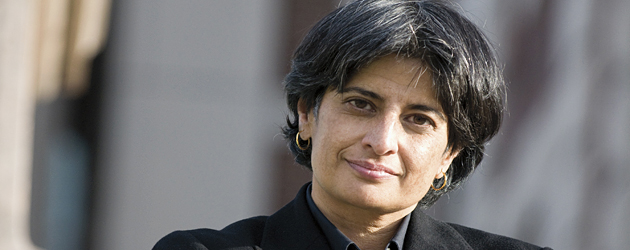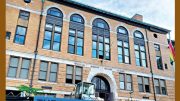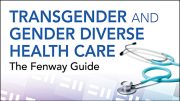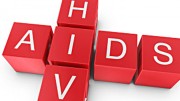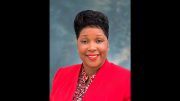By: Chuck Colbert/TRT Reporter–
If the LGBT movement is, at its core, a progressive struggle for justice and equality, then should not the gay-rights’ agenda include issues of economic, racial, class, and gender? In other words, is there more to gay rights and liberation than simply securing passage of non-discrimination laws and gaining the right to marry?
Longtime activist and LGBT community leader Urvashi Vaid certainly thinks so. For years now, she has been urging mainstream movement leaders to take up a broader economic rights and racial justice program.
In a 1996 book, Virtual Equality: The Mainstreaming Of Gay And Lesbian Liberation, Vaid argueda larger vision for the movement, with social justice as a window into the future.
And now in a new book, Irresistible Revolution: Confronting Race, Class, and the Assumptions of Lesbian, Gay, Bisexual, and Transgender Politics Vaid offers pointed criticism of the movement’s shortcomings on that score.
Lack of diverse representation
“We need a movement that is conscious of [certain] economic realities that real people are facing,” she explained recently during a wide-ranging, hour-long telephone interview. “And our movement must address and change the serious lack of representation of people of color in its leadership, and racial justice priorities in its agenda.”
Vaid was referring to a decade’s worth of economic demographics, data from the Williams Institute and other think thanks, which show many LGBT people are seniors, on Medicaid, and unemployed at the same time others are struggling to support themselves and families on fixed incomes.
She spoke from her New York City office at the Columbia Law School where Vaid currently serves as director of the Engaging Tradition Project, based at the school’s Center for Gender and Sexuality Law.
Her concern is that “we are not just a movement of young, wage-earning, and middle-class” people, she said, quickly adding, “which many of us are and that is a good thing.”
However, “It’s not the full picture of the community,” said Vaid.
What the Institute’s data and similar findings from studies and research by the National Gay and Lesbian Task Force and the National Center for Transgender Equality, among others, “help us to see” is “the parts of the community that are less visible,” she explained.
Fiscal cliff, the LGBT community and the crises accompanied to it
Accordingly, “this makes a demand on the political side of our movement that perhaps we need to take a look at issues we haven’t looked at before,” Vaid said, citing recent congressional negotiations over the so-called “fiscal cliff” as “state budgets are cutting out funding for social services at a time when communities, like our community, need homeless centers, community centers, and health-care programs — whatever.”
“I am making the argument that those issues [of inequality and disparity] need to rise to prominence and that we can’t just think that passing a non-discrimination law and winning marriage is the end of the process,” she said, adding, “LGBT people are dealing with unemployment, struggling with health crises — from HIV to cancer and much more, are dealing with sexual prejudice that is built into every institution we encounter. Broadening the agenda is imperative for the movement to make meaningful change in the lived experience of LGBT people.”
Vaid wrote Irresistible Revolution, which is a collection of essays on the politics of the movement, in hopes that her “voice” will “influence activists and others interested in social justice” whether or not they like the book, she said.
“I hope that the book can make it possible for people to start thinking about our work and our agenda in different ways,” Vaid said.
“None of the issues that I raise in Irresistible Revolution about race or class are new,” Vaid said in response to the question: Have we made any progress in the movement towards a broader gay-rights agenda?
Undoubtedly, she is no outsider to LGBT advocacy. From leadership positions at the National Gay and Lesbian Task force in the 1980’s and 1990’s to her work as a funder supporting LGBT issues at the Ford Foundation and the Arcus Foundation, Vaid has played a role in setting the movement priorities.
“The book has a pretty pointed critique” yet it is “collegial,” she said, readily acknowledging that her analysis is in fact “self-criticism because I am in that group. I don’t remove myself from that.”
In all, “I love the LGBT community and our movement. I feel so positively about our queer variance, our queer intelligence, and our queer resistance,” said Vaid.
Poverty, HIV/AIDS, women/lesbian and trans issues
“But no,” she said, “I don’t think we have done a very good job” or “have made any progress” in adding, for instance “issues of poverty,” HIV/AIDS health disparities, and other concerns to gay-rights agenda, including “criminal justice issues, women’s issues — violence against women, women earning less than men — or expanding the definition of family in welfare programs to enable low-income lesbians with kids to be covered.”
Therefore, to mobilize larger numbers of feminist activists, Vaid co-founded the Lesbian Political Action Committee (LPAC), which since its founding this past July, has raised more than $750,00 from donors in 44 states, with donations ranging from $5 dollars to $750,000. LPAC is open to anyone, including bisexual and trans women and also gay men and other allies who feel women’s rights are as important as LGBT equality.
For all her concerns, however, Vaid is optimistic about the movement, offering another way to look at the have-we-made-progress question. “When I see sophisticated work that activists are doing around health care, the impressive hidden work that provides access and opportunities and changes and affects people’s lives, then I feel more hopeful,” she said.
Massachusetts as a pillar
In addition, “When I look at a state like Massachusetts where we have won formal equality in many domains, I see how the movement continues to push to do the training, implementation, and education so that all parts of our community can exercise the rights that we have won, that makes me feel hopeful,” Vaid said.
She was referring to the Massachusetts Transgender Civil Rights Law that took effect last year after a six-year push by local activists, along with advocates continuing to press state lawmakers for more comprehensive anti-bullying and safe-schools legislation. Other statewide priorities include cradle-to-grave advocacy for LGBT youth and seniors, people living with HIV/AIDS, and survivors of intimate-partner violence.
There are other indicators of the LGBT movement’s health and vibrancy, too. “The movement is much larger than it was back then” in earlier decades, said Vaid. “I still feel by no means has the movement peaked.”
Vaid points to the Task Force’s Creating Change conference, which each year draws thousands of activists, as evidence of the span of the movement from moderate to conservative to much more radical grassroots groups. (Held this year in Atlanta, Georgia, the 25th Creating Change gathering is scheduled from January 23 – 27).
“The vastness of the movement and its decentralized nature make me hopeful,” she said.
“The process of being involved in something where you really can change lives and make a huge difference that makes the movement irresistible,” said Vaid.
The LGBT movement’s “honesty” is another hallmark of its irresistibility, she writes in her book’s introduction.
Another positive sign for LGBT rights, Vaid said, “is the extent to which [gay equality] is an issue for non-gay people,” most notably young people. She cited the 2009 March on Washington where scores of heterosexuals, many of them students from college campuses nationwide, carried signs reading, “I am a heterosexual ally.”
“It is extraordinary. The expansion of the movement beyond the LGBT community” to increasing numbers of heterosexual allies “is one of the reasons that we are winning,” Vaid said.
Perhaps the best example of non-gay allies making a difference was their key role in winning marriage referenda on Election Day.
“In every one of those four states [Maine, Maryland, Minnesota, and Washington], you had heterosexual leaders — major politicians, major business figures, leaders of color, faith-based leaders, saying ‘We support this,’” Vaid explained. “That’s really a different situation than four or eight years ago.”
Sure enough, President Obama’s coming out for marriage was game changer. “If you think about it, the supporters of the president are the people who support marriage equality or the expansion of LGBT rights — young people, women voters, people of color who are overwhelmingly in support of fair and equal treatment,” said Vaid. “It’s been so interesting for me to see what Jesse Jackson used to call the Rainbow Coalition actually come into being for this election.”
In winning marriage equality this time around, lessons learned from Proposition 8 were also helpful. “What I took away from the 2008 California defeat was the need to do more work to engage people and involve non-gay people in our movement,” she said.
“We did go back and do more public education and engagement of different kinds of [faith-based] congregations and populations, and many, many more straight allies came out and stepped up to advocate on our behalf,” Vaid added. “Public education is a critical element of how we are winning.”
Guard must stay up
For all her optimism, however, Vaid maintains the LGBT movement must keep up its guard. “What always worries me is the power of the opposition,” she said. “I am not complacent about them. They are not just going to go away or withdraw because we are winning.”
“The resistance in some ways is becoming more sophisticated, Vaid said, noting “The whole expansion of religious exemptions in laws that are passed. It’s really something to be worried about.”
“I think the gay community has to get more sophisticated in how we think about religious liberty and exemptions to civil rights laws,” she explained. “It’s a complicated argument for those of us who actually believe in freedom of religion and religious liberty” and yet “are civil libertarians and believe in the Constitution.”
It’s not yet clear whether movement leaders are inclined to tackle a more inclusive LGBT agenda. But the movement has matured in one way.
“The LGBT community is more politically hard core in how to work with friendly administrations,” said Vaid referring to President Obama’s leverage of federal government agencies through cabinet offices — including the Department of Health and Human Services (HHS), the Department of Education, the Department of Housing and Urban Development (HUD), and State Department, among others — to chip away at discrimination and inequality. One good example is a presidential memorandum through which Obama directed HHS to require all hospitals receiving Medicaid and Medicare to prohibit discrimination in visitation against LGBT people.
“There’s a tremendous amount of work going on in the federal agencies, and the agenda isn’t just about getting legislation through Congress,” Vaid explained. “The movement is more skilled in taking advantage of those kinds of opportunities [administrative agency and regulatory processes] than we were 20 years ago.”
© Copyright. Chuck Colbert. All rights reserved.

